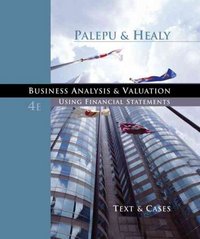Keep in mind that we are still in the Restaurant business in Texas. You found an existing building or land and can grow faster than the Industry average. Porter's Generic Model of Competition has helped you pin point an entry wedge with unique customers. Michael Porter's Generic Model of Competition (1985) COMPETITIVE ADVANTAGE 2. Pick one of these. Uniqueness ar Low Cost Differentiation Low Cost Posson SS Broad 1. Pick one area. Target STRATEGIC TARGET Market or Market Narrow Target (Niche) Focus Differentiation SSSS Focus Low Cost SSS Purpose The purpose of this assignment is to test the money aspect of the business. This will determine if we have a business, a pipe dream, or a hobby. Financial Feasibility Analysis Capital Requirements How much cash and securities do we need to get started? We will bring 20% with us for a loan. Estimated Earnings Can we beat the Industry averages in the IBIS report? What do the numbers look like? Do we lose money at first while developing the company? 2020 MGMT Financial Feasibility Assignment Spreadsheet (1) xlsx Return on Investment Can we beat the Industry average? What is the normal return on an investment like this? How soon do we expect to make a return on investment? Remember that you can estimate your expense using the IBIS industry report. Start with your room count percent of occupancy, and estimated sales. Then estimate your expenses using the averages listed in the IBIS report. C $ 720,000.00 $ $ 56,160.00 776,160.00 A B 1 Your Restaurant 2 Just Like Mom's." 3 Estimated Budget 4 Dollars, except were noted) 5 Year 2020 6 7 Sales Revenue 8 Sales Revenue 9 Est. 200 Customers * 360 days * $ 10) 10 Catering (add 7.8%) Inc. 11 Total Sales Revenue 12 13 Cost of Sales 14 Nages (36.2% of Revenue) 15 Purchases (32.3% of Revenue) 16 Depreciation (2.2% of Revenue) 17 Marketing (1.8% of Revenue) 18 Rent/Utilities (10.6% of Revenue) 19 Other Factors (13.1% of Revenue) 20 Total Operating Expenses 21 22 Operating income 23 Subtract Expenses from Sales 24 25 Operating Margin 26 $ $ $ $ $ $ $ 260,640.00 232,560.00 15,840.00 12,960.00 76,320.00 94,320.00 692,640.00 $ 27,360.00 4% Keep in mind that we are still in the Restaurant business in Texas. You found an existing building or land and can grow faster than the Industry average. Porter's Generic Model of Competition has helped you pin point an entry wedge with unique customers. Michael Porter's Generic Model of Competition (1985) COMPETITIVE ADVANTAGE 2. Pick one of these. Uniqueness ar Low Cost Differentiation Low Cost Posson SS Broad 1. Pick one area. Target STRATEGIC TARGET Market or Market Narrow Target (Niche) Focus Differentiation SSSS Focus Low Cost SSS Purpose The purpose of this assignment is to test the money aspect of the business. This will determine if we have a business, a pipe dream, or a hobby. Financial Feasibility Analysis Capital Requirements How much cash and securities do we need to get started? We will bring 20% with us for a loan. Estimated Earnings Can we beat the Industry averages in the IBIS report? What do the numbers look like? Do we lose money at first while developing the company? 2020 MGMT Financial Feasibility Assignment Spreadsheet (1) xlsx Return on Investment Can we beat the Industry average? What is the normal return on an investment like this? How soon do we expect to make a return on investment? Remember that you can estimate your expense using the IBIS industry report. Start with your room count percent of occupancy, and estimated sales. Then estimate your expenses using the averages listed in the IBIS report. C $ 720,000.00 $ $ 56,160.00 776,160.00 A B 1 Your Restaurant 2 Just Like Mom's." 3 Estimated Budget 4 Dollars, except were noted) 5 Year 2020 6 7 Sales Revenue 8 Sales Revenue 9 Est. 200 Customers * 360 days * $ 10) 10 Catering (add 7.8%) Inc. 11 Total Sales Revenue 12 13 Cost of Sales 14 Nages (36.2% of Revenue) 15 Purchases (32.3% of Revenue) 16 Depreciation (2.2% of Revenue) 17 Marketing (1.8% of Revenue) 18 Rent/Utilities (10.6% of Revenue) 19 Other Factors (13.1% of Revenue) 20 Total Operating Expenses 21 22 Operating income 23 Subtract Expenses from Sales 24 25 Operating Margin 26 $ $ $ $ $ $ $ 260,640.00 232,560.00 15,840.00 12,960.00 76,320.00 94,320.00 692,640.00 $ 27,360.00 4%









